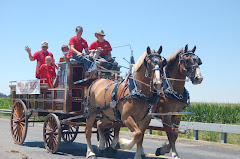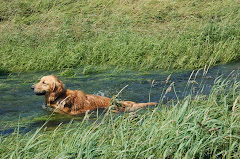Another advantage of the DR system is its compactability which allows us to obtain x-rays at a farm or stable instantaneously without making the trip back to the clinic to develop the x-rays.
 This is a photograph of our DR unit. The yellow piece of equipment is the x-ray generator which emits the x-ray beam. The blue plate (connected to the generator) receives the x-ray and transmits the image to the laptop on the cart. The blue plate replaces the x-ray film.
This is a photograph of our DR unit. The yellow piece of equipment is the x-ray generator which emits the x-ray beam. The blue plate (connected to the generator) receives the x-ray and transmits the image to the laptop on the cart. The blue plate replaces the x-ray film. 
This is a photograph of a digital radiograph being taken of a horse's cannon bone or front leg.

This is a photograph of the actual digital x-ray image as seen on the laptop.
Along with the DR unit, the Arthur Veterinary Clinic also has a digital ultrasound unit for use on horses, dogs and cats. Ultrasound is a great compliment to x-rays and allows us to obtain 3-D images of dog and cat abdomens, equine tendons and soft tissue swellings. Whether we are looking a bladder for possible stones or scanning the entire abdomen, ultrasound is a diagnostic test which we use frequently at the AVC. Just like DR, digital ultrasound lets us store images on a CD, thumb drive or email electronically.









